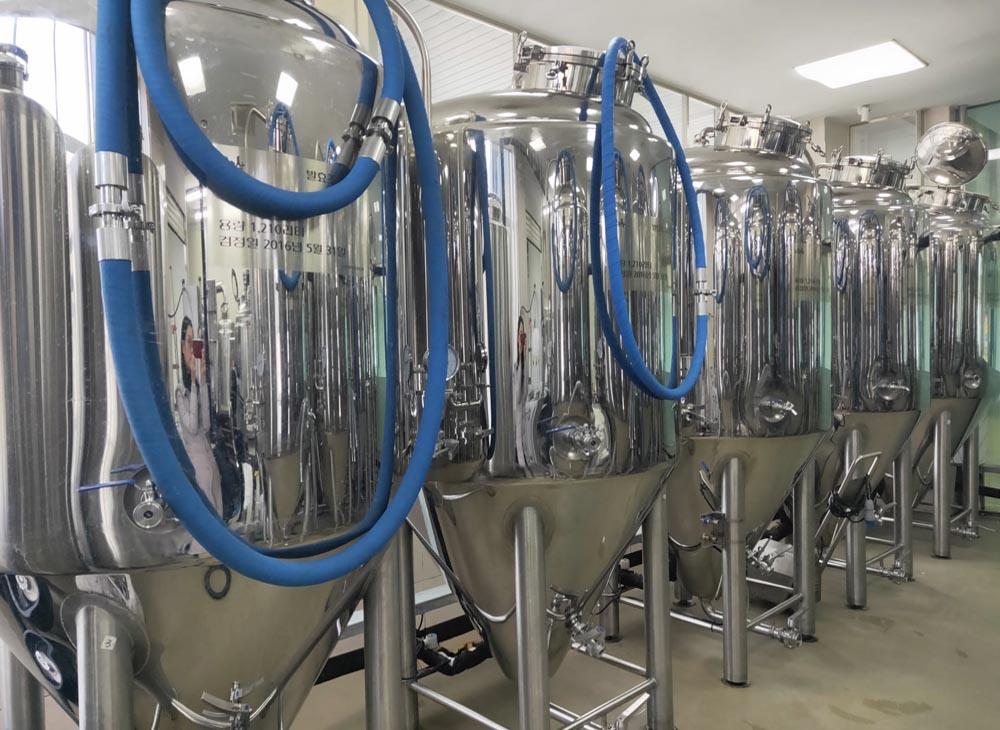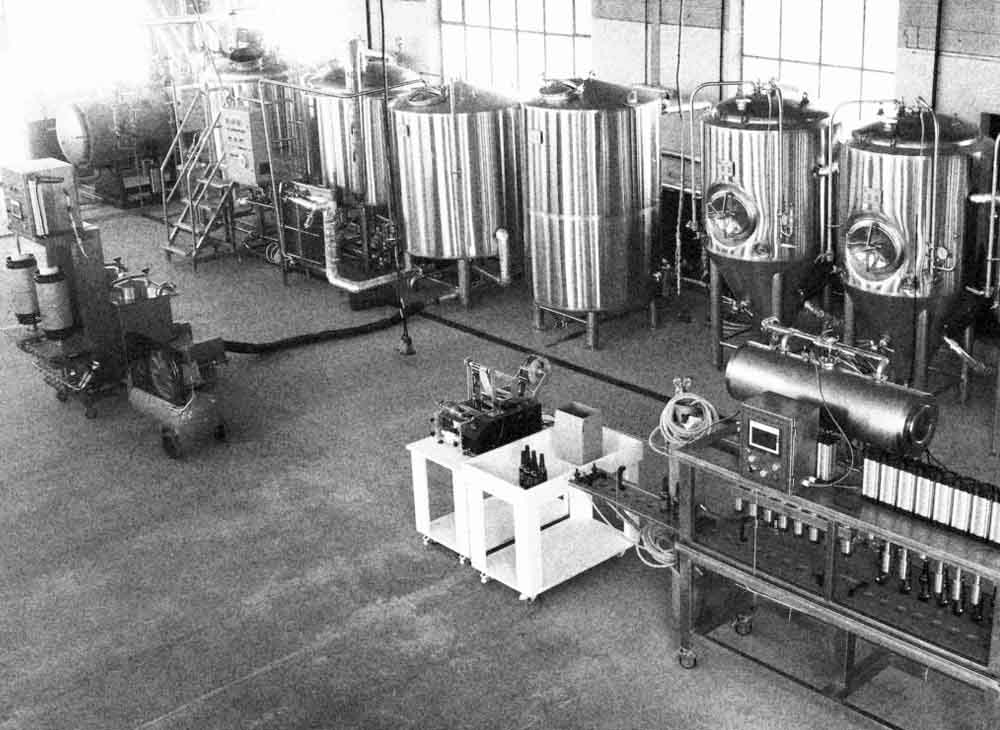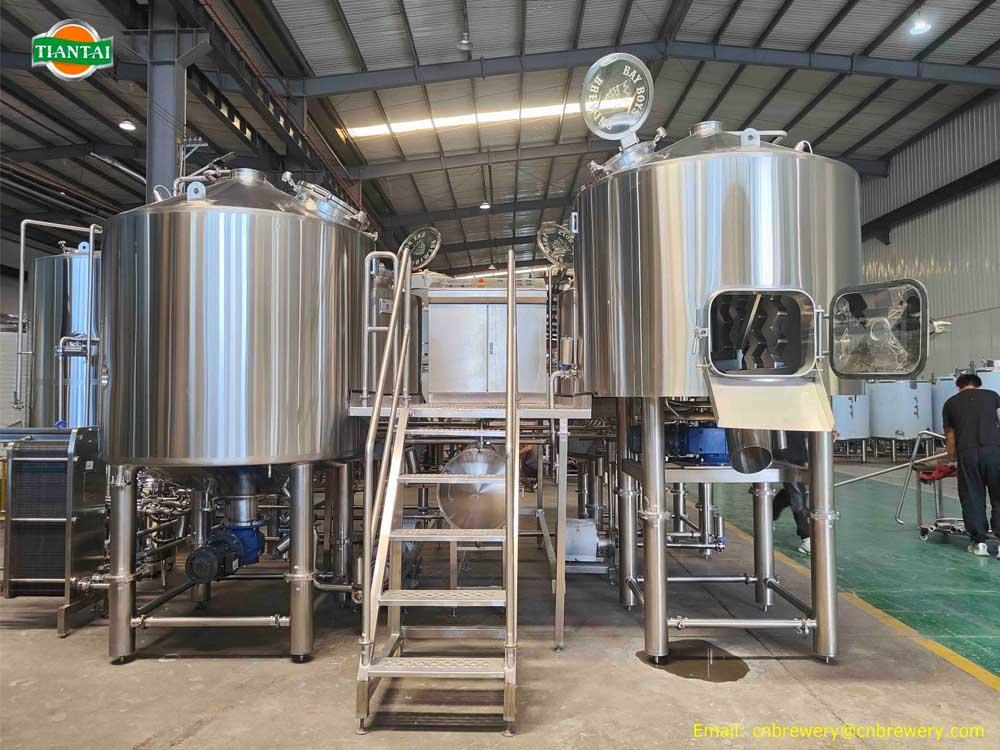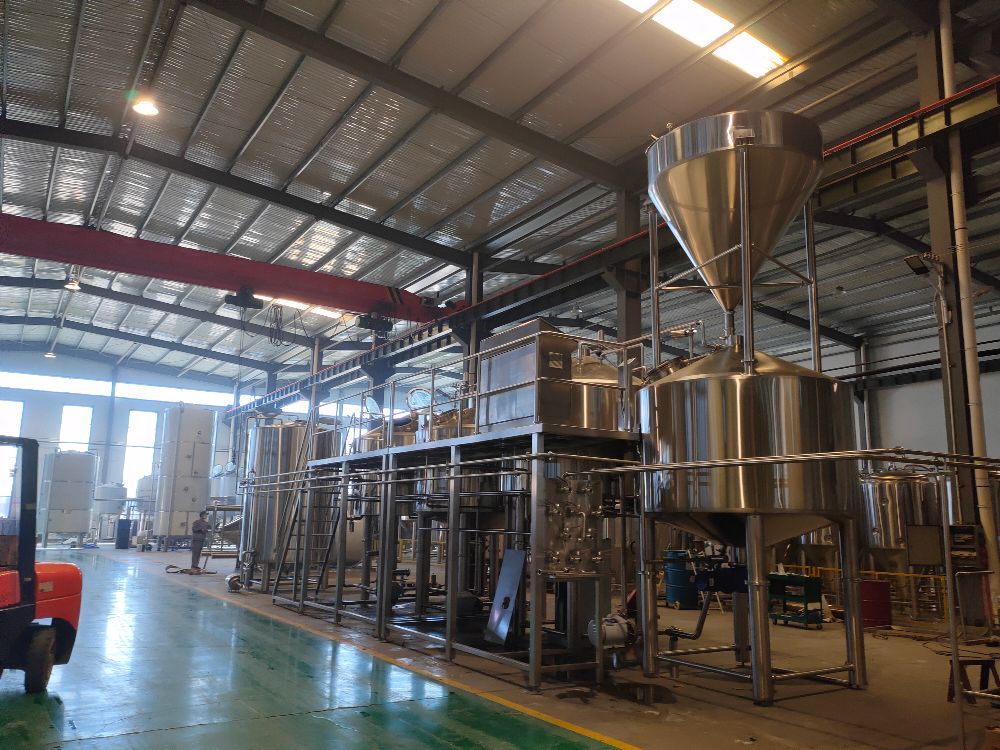What Is Happening in Your Beer Now? Primary Fermentation
- Jan 07, 2022
- 65
- tiantai
This first stage of fermentation, right after the beer is brewed, is called the primary fermentation. During this stage, the yeast are at their most active — they are feasting like it’s Christmas Day on all the sugars you spent your brew day creating. In return, they are creating alcohol and carbon dioxide. The alcohol stays behind in the beer, making it boozy, while the carbon dioxide bubbles out through the airlock (if we didn’t let it escape, eventually the lid would blow off the bucket!).

There are also some more subtle things happening during this stage. As the yeast eat up the sugar, the flavor of the beer goes from malty sweet to something much closer to the flavor of the finished beer. Depending on the exact variety of yeast you used, some flavor compounds, called phenols and esters, will make their way into the beer. Phenols add a bit of baking-spice spiciness, while esters add fruity flavors.
This stage of very active fermentation lasts about a week — you’ll see a lot of activity in the first few days and then it will taper off toward the end of the week. As the yeast nears the end of its sugar feast and quiets down, the used-up yeast will start to fall down to the bottom of the bucket, along with leftover hop sediment, grist from the mash, proteins, and other solids. This creates a solid layer of sediment at the bottom of the bucket with clean, clear beer above.
Keep the lid on the fermentation bucket this whole time — no peeking! It’s tempting to open it up to check on the wort, but every time you do, there’s a risk that bacteria or wild yeast can get into the beer. This is a fairly vulnerable time for the yeast; it’s just getting a foothold established in the beer, so it would be easy for bacteria or another strain of yeast to budge its way in for a share of the sugars.
Here Is What You’ll See
Since we can’t open the lid, the main way that we get information on what is happening with our beer comes from the airlock. Specifically, the bubbles coming up through the water in the airlock.
For the first 12 to 24 hours, you won’t see much (if any) activity in the airlock. The yeast is taking this time to gather its strength and multiply its numbers.
For the next 1 to 3 days, you’ll start to see bubbles popping rapidly up through the airlock. At first, they’ll pop up every few seconds, then every second, and then even several times a second. If you take a sniff of the air coming out of the airlock, you should notice some nice yeasty aromas. It should smell good — like beer!
Through the end of the week, the bubbling in the airlock will gradually slow down, becoming more and more infrequent and then stopping altogether. This is good — during this slow-down period, solids are sinking to the bottom of the bucket and clearing out of your beer.
Here Is What You Need to Do
Actually, there’s not really much to do during this stage! Leave the bucket of beer somewhere out of the way and out of direct sunlight (you can throw a blanket over it if you need to). Keep an eye on the airlock to make sure that fermentation seems to be progressing as it should. Try to keep the beer around room temperature, 65°F to 70°F. Cooler temperature will slow down fermentation and warmer temperatures will speed it up (see the Troubleshooting section for info on brewing at low or high temperatures).
What’s Next?
After the primary fermentation is over, the next step is to transfer the beer into a smaller, cozier container for the secondary fermentation. We’ll talk more about this toward the end of the week.
Troubleshooting the Primary Fermentation
Was I supposed to put water in my airlock?
Yes, the airlock needs to be filled with water (or sanitizer or vodka) so that it forms a barrier between the beer inside the bucket and the air outside. If you forgot, add water to the airlock as soon as you remember. There’s some risk that bacteria has gotten into your beer, but it’s worth continuing to ferment the beer to see how it turns out.
It’s really hot (or cold) in my apartment — is that OK?
Ale yeast, which we’re using here, work best between 65°F and 75°F. Ideally, you want to keep it between those temperatures. A little dip above or below isn’t a big deal, but if it’s consistently hotter or cooler, those temperature can make life hard for the yeast.
At low temperatures, the yeast can start to go into hibernation and will stop fermenting your beer. At warmer temperatures, between 75°F and 95°F, the yeast will gobble up the sugar as quickly as it can, so fermentation might be over very quickly. The beer is okay, but you might notice a more pronounced fruity flavor — it’s not necessarily toss-the-batch bad, but it’s also not totally desirable. Once you get into the 90s, you might also start noticing a harsh, solvent-like character in your beer, like grain alcohol. If it’s very hot in your house, try wrapping the fermentation bucket in wet towels and keeping it in the coolest place you can find.
My beer didn’t start fermenting in 24 hours.
If your house is a bit chilly (less than 65°F), try moving the beer somewhere warmer and waiting another 24 hours. If that’s not the issue, then it’s likely that something is up with your yeast. It’s possible that it expired or hadn’t been stored properly. If you can, pick up some fresh yeast (check the expiration date!) and add it to the beer as soon as you can.
I was away for a few days and don’t know if my beer started fermenting!
In all likelihood, fermentation happened while you were away and now the activity has slowed. Watch the airlock for a few minutes — you may still catch a stray bubble, which you can take as a good sign. If you’re really worried, you can open the bucket and check the specific gravity with your hydrometer; if fermentation happened, the number will be lower than it was when you started.
My beer stopped bubbling after a few days.
That’s fine! Primary fermentation has happened and now the activity is slowing down. If you’re worried that maybe fermentation didn’t happen, you can open the bucket and check the specific gravity with your hydrometer; if fermentation happened, the number will be lower than it was when you started.
I’ve read about “stuck fermentation” and am worried this happened to my beer.
Stuck fermentation happens when, for some reason or another, the yeast stop working midway through fermentation while there are still sugars left unfermented in the beer. This isn’t very common for homebrewers — if it does happen, the primary reason is the temperature dropped below 65°F midway through primary fermentation, which causes the yeast go into a state of hibernation. If this is your case, move your beer somewhere warmer. If temperature isn’t the issue, then it’s more likely that your beer has simply finished fermenting. If you’re worried, you can open the bucket and check the specific gravity with your hydrometer; the number should be within .005 or so degrees of the target final gravity mentioned in your recipe.
It’s been a week and my beer hasn’t stopped bubbling.
You will still see a stray bubble or two, but it probably shouldn’t be bubbling more than once every few minutes. If it is, it’s possible that you picked up an infection somewhere in your process. Smell the air coming out of the airlock: Does it smell fresh and beer-like? If so, it might be fine and fermentation was just slow; it’s worth continuing to the next stage and seeing how things progress.
Does it smell like over-cooked vegetables, rotten eggs, or something else unsavory? If so, then this does sound like an infection and it’s probably best to dump this batch and give it another go. Pay very careful attention to cleanliness and sanitation next time.

There are also some more subtle things happening during this stage. As the yeast eat up the sugar, the flavor of the beer goes from malty sweet to something much closer to the flavor of the finished beer. Depending on the exact variety of yeast you used, some flavor compounds, called phenols and esters, will make their way into the beer. Phenols add a bit of baking-spice spiciness, while esters add fruity flavors.
This stage of very active fermentation lasts about a week — you’ll see a lot of activity in the first few days and then it will taper off toward the end of the week. As the yeast nears the end of its sugar feast and quiets down, the used-up yeast will start to fall down to the bottom of the bucket, along with leftover hop sediment, grist from the mash, proteins, and other solids. This creates a solid layer of sediment at the bottom of the bucket with clean, clear beer above.
Keep the lid on the fermentation bucket this whole time — no peeking! It’s tempting to open it up to check on the wort, but every time you do, there’s a risk that bacteria or wild yeast can get into the beer. This is a fairly vulnerable time for the yeast; it’s just getting a foothold established in the beer, so it would be easy for bacteria or another strain of yeast to budge its way in for a share of the sugars.
Here Is What You’ll See
Since we can’t open the lid, the main way that we get information on what is happening with our beer comes from the airlock. Specifically, the bubbles coming up through the water in the airlock.
For the first 12 to 24 hours, you won’t see much (if any) activity in the airlock. The yeast is taking this time to gather its strength and multiply its numbers.
For the next 1 to 3 days, you’ll start to see bubbles popping rapidly up through the airlock. At first, they’ll pop up every few seconds, then every second, and then even several times a second. If you take a sniff of the air coming out of the airlock, you should notice some nice yeasty aromas. It should smell good — like beer!
Through the end of the week, the bubbling in the airlock will gradually slow down, becoming more and more infrequent and then stopping altogether. This is good — during this slow-down period, solids are sinking to the bottom of the bucket and clearing out of your beer.
Here Is What You Need to Do
Actually, there’s not really much to do during this stage! Leave the bucket of beer somewhere out of the way and out of direct sunlight (you can throw a blanket over it if you need to). Keep an eye on the airlock to make sure that fermentation seems to be progressing as it should. Try to keep the beer around room temperature, 65°F to 70°F. Cooler temperature will slow down fermentation and warmer temperatures will speed it up (see the Troubleshooting section for info on brewing at low or high temperatures).
What’s Next?
After the primary fermentation is over, the next step is to transfer the beer into a smaller, cozier container for the secondary fermentation. We’ll talk more about this toward the end of the week.
Troubleshooting the Primary Fermentation
Was I supposed to put water in my airlock?
Yes, the airlock needs to be filled with water (or sanitizer or vodka) so that it forms a barrier between the beer inside the bucket and the air outside. If you forgot, add water to the airlock as soon as you remember. There’s some risk that bacteria has gotten into your beer, but it’s worth continuing to ferment the beer to see how it turns out.
It’s really hot (or cold) in my apartment — is that OK?
Ale yeast, which we’re using here, work best between 65°F and 75°F. Ideally, you want to keep it between those temperatures. A little dip above or below isn’t a big deal, but if it’s consistently hotter or cooler, those temperature can make life hard for the yeast.
At low temperatures, the yeast can start to go into hibernation and will stop fermenting your beer. At warmer temperatures, between 75°F and 95°F, the yeast will gobble up the sugar as quickly as it can, so fermentation might be over very quickly. The beer is okay, but you might notice a more pronounced fruity flavor — it’s not necessarily toss-the-batch bad, but it’s also not totally desirable. Once you get into the 90s, you might also start noticing a harsh, solvent-like character in your beer, like grain alcohol. If it’s very hot in your house, try wrapping the fermentation bucket in wet towels and keeping it in the coolest place you can find.
My beer didn’t start fermenting in 24 hours.
If your house is a bit chilly (less than 65°F), try moving the beer somewhere warmer and waiting another 24 hours. If that’s not the issue, then it’s likely that something is up with your yeast. It’s possible that it expired or hadn’t been stored properly. If you can, pick up some fresh yeast (check the expiration date!) and add it to the beer as soon as you can.
I was away for a few days and don’t know if my beer started fermenting!
In all likelihood, fermentation happened while you were away and now the activity has slowed. Watch the airlock for a few minutes — you may still catch a stray bubble, which you can take as a good sign. If you’re really worried, you can open the bucket and check the specific gravity with your hydrometer; if fermentation happened, the number will be lower than it was when you started.
My beer stopped bubbling after a few days.
That’s fine! Primary fermentation has happened and now the activity is slowing down. If you’re worried that maybe fermentation didn’t happen, you can open the bucket and check the specific gravity with your hydrometer; if fermentation happened, the number will be lower than it was when you started.
I’ve read about “stuck fermentation” and am worried this happened to my beer.
Stuck fermentation happens when, for some reason or another, the yeast stop working midway through fermentation while there are still sugars left unfermented in the beer. This isn’t very common for homebrewers — if it does happen, the primary reason is the temperature dropped below 65°F midway through primary fermentation, which causes the yeast go into a state of hibernation. If this is your case, move your beer somewhere warmer. If temperature isn’t the issue, then it’s more likely that your beer has simply finished fermenting. If you’re worried, you can open the bucket and check the specific gravity with your hydrometer; the number should be within .005 or so degrees of the target final gravity mentioned in your recipe.
It’s been a week and my beer hasn’t stopped bubbling.
You will still see a stray bubble or two, but it probably shouldn’t be bubbling more than once every few minutes. If it is, it’s possible that you picked up an infection somewhere in your process. Smell the air coming out of the airlock: Does it smell fresh and beer-like? If so, it might be fine and fermentation was just slow; it’s worth continuing to the next stage and seeing how things progress.
Does it smell like over-cooked vegetables, rotten eggs, or something else unsavory? If so, then this does sound like an infection and it’s probably best to dump this batch and give it another go. Pay very careful attention to cleanliness and sanitation next time.




